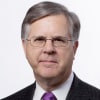[ad_1]
WASHINGTON — More than two months after the U.S. Capitol was attacked on Jan. 6, the Justice Department has yet to answer a key question: Was the siege planned well in advance?
Or was the decision to storm the building made on the spot by demonstrators who conspired to go to Washington to engage in violent protest in the streets?
A federal prosecutor said during a court hearing Friday for nine defendants facing conspiracy charges that “we do not have at this point someone explicitly saying our plan is to force entry into the Capitol in order to stop the certification.”
In the days immediately following the riots, federal prosecutors suggested in court documents that two separate extremist groups made up of followers of the Oath Keepers and the Proud Boys, planned to forcibly enter the Capitol and stop the official counting of Electoral College votes for president.
But no evidence of any planning well in advance has yet been revealed, and a recent court filing suggests that such a plan may not have been formed until the actual day of the riot.
One of the first conspiracy charges was filed Jan. 17 against Thomas Caldwell, 66, of Barryville, Virginia. Prosecutors said records obtained from Facebook show he was involved with two others “in planning and coordinating the January 6 breach of the US Capitol.”
A few days later, six others were charged with being part of the same conspiracy. Court documents said they “planned with each other, and with others known and unknown, to forcibly enter the Capitol on January 6″ in order to stop or delay the presidential vote count.”
Prosecutors said Caldwell communicated with other Oath Keeper members and followers about meeting in Washington in early January. The charging documents said he helped others reserve hotel rooms in the area and replied to a Facebook comment by writing: “It begins for real Jan 5 and 6 on Washington D.C. when we mobilize in the streets. Let them try to certify some crud on capitol hill with a million or more patriots in the streets. This kettle is set to boil.”
Caldwell and at least a dozen other people facing federal charges are accused of planning to engage in potentially violent demonstrations in Washington. In early February, government lawyers urged a federal judge not to release him on bail, citing “the detailed and organized nature of Caldwell’s planning for the January 6 operation” and calling him “a key figure who put in motion the violence that overwhelmed the Capitol.”
But this week, prosecutors adopted a different tone, writing in a court filing that Caldwell “is not charged with conspiring to storm the Capitol.” Instead, they said, “He is alleged to have conspired with others to ‘stop, delay, and hinder Congress’s certification of the Electoral College vote.'”
As for communications among others accused of being part of an Oath Keeper’s conspiracy, the government said, “There is no discussion of forcibly entering the Capitol until January 6, 2021.”
Caldwell’s lawyer, David Fischer, urged a federal judge to release his client from jail pending trial. He said the government “can produce no concrete, smoking gun evidence that anyone had a pre-planned, premeditated plan to storm inside the Capitol.”
On Friday, Federal District Court Judge Amit Mehta allowed Caldwell to be released to home confinement. While he participated in preparing for potential acts of violence, “There is an absence of direct evidence, at least, of planning by Mr. Caldwell to enter the Capitol building,” Mehta said. “And ultimately he did not enter the building.”
Kathryn Rakoczy, a prosecutor in the Oath Keepers conspiracy case, said during Friday’s hearing that the reference in court documents to a plan to enter the Capitol was contained “in a background section,” while the actual charge is a conspiracy to obstruct the congressional proceeding.
The possibility that no plan to enter the Capitol came earlier than the day of the siege is reflected in charges filed against two men accused of being members of the Proud Boys, Dominic Pezzola and William Pepe. An indictment said the period of their conspiracy was “from at least as early as January 6, 2021 and continuing through January 6, 2021.”
Current and former Justice Department officials cautioned that the sprawling investigation is still in its early stages and that more charges can be filed as new details emerge.
Even if the idea of storming the building and going inside to disrupt the vote arose only after demonstrators congregated at the Capitol, such a last-minute plan could still constitute a conspiracy, said Chuck Rosenberg, a former federal prosecutor and NBC News legal analyst.
It is also possible, the current and former officials said, that a small number of rioters intended on their own, well before reaching the Capitol, to force their way past police barricades and break in.
The former U.S. Capitol police chief, Steven Sund, said he believed at least some of the rioters came to Washington intending to storm the Capitol. He said it was not simply a demonstration that spontaneously turned its ire on Congress.
“These people came specifically with equipment. What, you’re bringing climbing gear to a demonstration? You’re bringing explosives. You’re bringing chemical spray,” he said, ”You’re coming in prepared,” he told a congressional hearing last month.
The FBI has said Proud Boys and Oath Keepers followers were in the vanguard of those who broke through police lines and smashed windows to let the first rioters into the building.
The Justice Department said Friday that 320 people have been charged so far in connection with the riot, and “at least one hundred additional individuals will be charged.”
Daniel Barnes contributed.
[ad_2]
Source link
